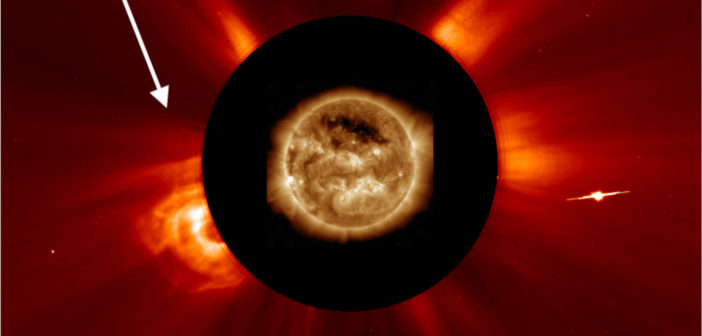How does the Sun accelerate particles to relativistic energies? The answer may lie in the shocks that form between clashing plasma structures high in the Sun’s atmosphere, in its corona. The composite image above shows the Sun’s disk in extreme-ultraviolet light overlaid on a white-light image of the wispy corona captured by blocking the Sun from view. A massive eruption of plasma called a coronal mass ejection emerges from the lower-left side, while faint, streaky coronal streamers point outward in multiple directions. The white arrow indicates a streamer that has been deflected by the passage of the coronal mass ejection. Space-based observatories viewed the event from multiple perspectives, allowing a team led by Federica Frassati (National Institute for Astrophysics, Astrophysical Observatory of Turin, Italy) to reconstruct a three-dimensional view of the shock front as it expanded. The team’s results show, for the first time, that the interaction between an advancing shock front and background solar streamers can accelerate particles up to a whopping 100 megaelectronvolts. To learn more, check out the full article below.
Citation
“Acceleration of Solar Energetic Particles through CME-driven Shock and Streamer Interaction,” Federica Frassati et al 2022 ApJ 926 227. doi:10.3847/1538-4357/ac460e
